Oppo might not be a well-known name outside of it’s home market of China, but that doesn’t mean that the company’s mobile products should be overlooked. Oppo continuously pushes smartphone design boundaries along with new innovative features across their product line every year. This time around we have the Oppo R5, an elegant device that can proudly boast the title of world’s thinnest smartphone, coming in at an incredible 4.85 mm thick. With the design choices made on the Oppo R5, did Oppo make any notable compromises to achieve their thickness goal? We’ll find out in our detailed review of the Oppo R5 below.
Before we get started with this review, I’d like to mention that I’ve had the Oppo R5 for a little over a month. The device that shipped to me included pre-production software. I’ve held off on publishing this review for quite some time as I’ve been waiting for software fixes from Oppo. The company has produced multiple fixes over the past month, however, my pre-production device will not install any of the OTA updates that could include fixes for my issues. Since the OTA updates repeatedly fail me, I have requested a full-ROM from Oppo, but they have not provided one as of this writing. If they do, and my shortcomings are resolved, this review will be updated. Let’s get started.
Specs
- Android 4.4.4 KitKat / Color OS 2.0
- Price: $499 USD / €399 EUR
- SoC: Qualcomm Snapdragon 615
- CPU: 1.5 GHz Octa-Core
- GPU: Adreno 405
- Display: 5.2 inch AMOLED
- Resolution: 1920 x 1080 pixels, 423 PPI
- Memory: 2GB RAM
- Storage: 16GB (no microSD)
- Rear camera: 13-megapixel Sony Exmor IMX214 BSI sensor
- Front camera: 5-megapixel front-facing 83 degree wide angle lens
- Battery: 2000 mAh Li-Po with Rapid Charge
- NFC, Bluetooth 4.0, GPS, 5G Wi-Fi 802.11 b/g/n/a
- Ports: MicroUSB, no 3.5mm audio
- Bands: International
- GSM850/900/1800/1900
- WCDMA850/900/1900/2100
- FDD-LTE B1/3/7
- TD-LTE B40
- Dimensions: 148.9 × 74.5 × 4.85 mm
- Weight: 155g
Hardware & Design
If you’ve held an Oppo device in your hand before, such as the N1, or Find 7, you’ll realize that the Oppo R5 is no exception when it comes to solid build quality. Oppo devices feel graceful and look stylish in your hand, and the Oppo R5 holds true to that thanks to the high quality steel frame and rock solid build quality. Frankly, the Oppo R5 feels like an elegant tank in the palm of your hand.
The Oppo R5, while extremely minimal and flat, is quite easy to hold thanks to the overall thinness of the phone. The flat sides and rock solid build quality make gripping the R5 fairly easy. Often with thin devices I find myself having trouble to hold on to them, I didn’t have this issue with the R5.
The power and volume buttons were opposite from what I was used to with the Moto X or Nexus 6, and often resulted in pressing the power button inadvertently due to the button location, but I’d say that’s more of a personal preference than a design flaw. Besides placement, the buttons themselves are just as well designed as the rest of the phone, toting high build quality.
The main attraction with the Oppo R5 is the smartphone’s extreme thinness. At just 4.85 mm thick, the Oppo R5 is currently the thinnest smartphone available, a feat Oppo has held in the past with their Find 5 back in 2013. The Oppo R5 does make a few sacrifices on the design front, however this most impressive feat has been achieved without compromising any structural integrity as you’ll see in a video below.
The back of the phone isn’t entirely flush, having the camera stick out just ever so slightly, similar to the iPhone 6. The Oppo R5 is also missing something, a piece of hardware that we’ve seen on just about every phone since phones started carrying enough storage for media or had Internet access. The Oppo R5 is so thin at 4.85 mm that there wasn’t enough room to squeeze in a 3.5 mm audio jack and it’s housing. Instead, the Oppo R5 continues to push form over function and comes with a USB to 3.5 mm audio jack adapter for headphone enthusiasts.
Oppo’s latest still hasn’t moved past 2011, including hardware keys equipped with a menu button on the left, home in the middle, and a back button on the right hand side. Many people still prefer physical buttons versus software keys, personally, I despise hardware keys. However, the inclusion of a menu button on the left hand side makes these cringeworthy no matter what camp you’re from.
Oppo also included a wallet case with the R5 that includes a window that activates to display the date and time when you double tap the window. The case also turns the screen on and off when opening and closing the case flap. For those that like cases, the included high quality case is a nice added bonus.
Display
The display on the Oppo R5 comes with a 5.2-inch AMOLED display with a 1080p resolution, producing a pixel density of 423 ppi. Quad HD might be all the rage these days, but Oppo opted for a more modest display that fits the device’s mid-range spec sheet. The AMOLED display produces vibrant colors with a heavy amount of saturation as one would expect. As for outdoor and nighttime visibility, the deep blacks and bright whites allow for great viewing no matter the time of day.
WiFi, Bluetooth, Data, and Call Quality
The R5 doesn’t have 802.11ac or Bluetooth 4.1, as the majority of new handsets have been doing for a while. As a mid-range specced Android phone, the Oppo R5 doesn’t come with all of latest and largest internals, and that’s okay as most people won’t need to care about iterations beyond 802.11n or Bluetooth 4.0 for a while. I was able to connect to my 5GHz home WiFi network just fine and use stream music to a Bluetooth speaker with no hiccups.
The Oppo R5 supports GSM (850/900/1800/1900MHz), UMTS (850/900/1900/2100MHz), and LTE (Bands 1, 3, and 7) networks. That means, in the good ole US, it’s missing support for T-Mobile’s HSPA+ 42 and Band 4 LTE networks, as well as AT&T’s Band 4 and 17 LTE networks. The HSPA+ compatible radios in the Oppo R5 work well on AT&T and should function similarly on T-Mobile, though I wasn’t able to test. As for LTE connectivity, Oppo has no plans on releasing a US LTE variant at this time. Bummer.
Call quality on the Oppo R5 ran the course just as one would expect. I was able to hear callers and they were able to hear me as intended without struggle.
Speakers and Audio
The single speaker output on the Oppo R5 isn’t going to win any awards, but it’s not going to go down without a fight either. As I type this, I’m jamming to a healthy mix of dubstep beats, and the Oppo R5 does produce enough sound for me. However, when being compared to other devices such as my Nexus 6, the Oppo R5 does lose that battle. As for the ringer, I was able to hear the ringer in my car and in crowded areas with ease.
One of the more prominent concerns with Oppo’s R5 surrounds the audio jack, or the lack thereof. Oppo wasn’t able to include your standard audio jack do to the R5’s extreme thinness and instead opted to provide a USB to 3.5 mm audio jack adapter. The question remains; how does audio sound through the USB adapter? While I’m not an audiophile by any means, throughout my testing I wasn’t able to tell the difference and was completely satisfied. And speaking of headphones, in standard Oppo fashion, the R5 comes with it’s very own set of high quality earbuds. You just won’t be able to use them if you happen to need to charge your phone at the same time.
Camera
Oppo’s rear camera is equipped with a 13 megapixel Sony Exmor IMX214 BSI sensor. If that sounds familiar, it’s the same camera sensor found in Google’s Nexus 6. Though when comparing the two, I believe the Nexus 6 takes better photos. The Oppo R5 camera does produce detailed images coming from a variety of lighting scenarios with minimal noise, unless we go into low light scenarios, then the R5 seems to underperform. That said, the shutter speed on the Oppo R5 is extremely fast.
When it comes to camera software, Oppo’s PI 2.0+ engine offers some of the best features in the camera control business with a wide variety of shot options, various scene modes such as GIF, Double Exposure, RAW, Super Macro, After Focus, Colorful Night, Slow Shutter, etc and even an expert mode allowing shutter speed control, ISO controls, and exposure compensation options. Just like the Oppo Find 7, the Oppo R5 includes an Ultra HD mode, which allows for 50 MP shots by quickly taking a series of photos and then stitching them together. It does take an extra second or two, but the end result is a sharper, more detailed, and very large image.
- Normal
- Ultra HD
- HDR
- Normal
- Ultra HD
- Normal
- Normal
- Ultra HD
- HDR
- HDR
- Ultra HD
- Normal
- Normal
- Normal
- Ultra HD
- HDR
- Low Light Normal
- Low Light Ultra HD
- Low Light HDR
- Night Slow Shutter
- Night Slow Shutter
As for video, the Oppo R5’s rear video resolution tops out at 1080p, unlike the current 2K trend, but does offer a few juicy tidbits such as slow motion video and HDR video. Here’s a short video sample.
The front facing camera on the Oppo R5 consists of a 5 megapixel shooter with an 83 degree wide angle lens, which seems to perform quite well for “selfies”, videos, and video conferencing. Here’s another short video sample.
Battery Life
The Oppo R5 might arguably be the pinnacle of design and build quality, but there’s definitely a few shortcomings and battery life is near the top of that list. Due to the incredibly thin nature of the Oppo R5, Oppo was only able to include a small 2,000 mAh battery. Throughout my testing, I was only able to get about 12 hours of usage with about 2 hours of screen on time. Producing a phone this thin definitely impacted battery life and I’m not sure why being able to boast the world’s thinnest phone is better than a phone that can get you through the day, but whatever, preferences I guess.
Though, the good news here is that the R5 comes with Oppo’s patented VOOC rapid charging technology, which is capable of charging the R5 up to 75% in about 30 minutes. The R5 I received didn’t include a US charger, which makes sense as they don’t plan on supporting US markets. However, I had a spare VOOC charger from another Oppo device and was able to successfully use VOOC rapid charging at the advertised rates. Being able to quickly give your dying phone a hefty helping of juice is quite nice.
Performance
Under the hood the Oppo R5 packs a 1.5 GHz Snapdragon 615 processor, an Adreno 405 GPU, and 2GB of RAM. The octa-core Snapdragon 615 SoC from Qualcomm is considered mid-range, though is 64-bit compatible. ColorOS 2.0 and Android 4.4.4 however, are only 32-bit, meaning the software doesn’t take full advantage of the hardware. Still though, the phone generally performs great and applications launch fast with no noticeable lag or dropped frames from games or videos. Every once in a while while accessing notifications or the quick toggles, I would notice stutter and lag. Chances are these issues have been resolved or can be resolved in future software updates.
For those that like numbers, the Oppo R5 scored 29,714. As you can see, the phone’s not going to win any specs or numbers awards.
Software
When it comes to software, Oppo’s deep customization options and suite of applications that make up ColorOS are quite unique. With the Oppo R5, ColorOS received a version bump to 2.0 and comes with Android 4.4.4 KitKat, a first for Oppo phones. Although, the overall aesthetics haven’t changed all that much besides a darker settings panel, the gesture panel has been moved to the bottom, and the proprietary ColorOS apps received a fresh coat of paint.
Let me just tell you that moving the gesture panel from a swipe down from the top to a swipe up from the bottom is a lot nicer than it seems. The change in placement puts a stop to many accidental gesture panel launches when trying to access the notification shade, which normally resulted in users (including myself) just disabling the gesture panel in the past. The rest of Oppo’s standard gestures are all present, allowing for quick access to the camera, flashlight, changing tracks, turning the screen on and off, and now includes air gestures for navigating your home screen.
Moving on to Oppo’s full suite of applications, which are for the most part located inside an application called Security Center. Inside you’ll find Memory cleanup, App encryption, Data saving, Power manager, Quiet time, Block, Data monitor, Permission management, and Guest mode.
- Memory cleanup – essentially an app and task killer, freeing up memory.
- App encryption – not really encryption, it’s really just password protecting applications.
- Data saving – you can block certain applications from accessing background data.
- Power manager – power saving and super power saving modes.
- Quiet time – allowing you to put your device into silent mode for certain hours.
- Block – phone number white and black listing.
- Data monitor – this is essentially just the built in Android data monitor.
- Permission management – allows you to see which apps have access to which permissions.
- Guest mode – allows you to set applications as private, disabling them by using the guest password.
Additionally, the theming capabilities are probably one of my favorite features of ColorOS. The Theme Store allows you to change the look and feel of nearly every aspect of your phone, though not as powerful as the theme engine that’s included with CyanogenMod.
As mentioned in the performance section above, ColorOS does have a few hiccups from time to time, that can be seen throughout the OS. For example, air gestures were very inconsistent and boreline too touchy. ColorOS comes with SwiftKey installed by default, if you try to change to another keyboard, the phone crashes and reboots, defaulting back to SwiftKey. The built in Music application is buggy, switching tracks automatically, though Google Play Music is fine. And lastly, sometimes the pull down toggles pull down horribly slow. Overall, I feel ColorOS 2.0 has some bugs and performance issues that need to be resolved, but it’s better than previous iterations of ColorOS.
Conclusion
At $499, the Oppo R5 is an expensive mid-range phone, but Oppo is obviously marketing this phone as a premium device based on the overall quality and aesthetics. When it comes to build quality, a lot of phones just can’t compare with what Oppo has done with the R5. As I said above, using the Oppo R5 feels like you’re holding an elegant tank in the palm of your hand. While I wouldn’t recommend trying this at home, Oppo has confirmed the R5’s impeccable build quality and used the R5 as a knife, a hammer, and a speed bump. Check out the video below to see what I’m talking about.
Beyond hardware though, the Oppo R5 is a tough sell for me and most likely for you too. The Oppo R5 is launching with Android 4.4.4 KitKat and if Oppo’s software update track record continues as it has for the past few years, the Oppo R5 most likely won’t see Android 5.0 Lollipop without going to a custom ROM.
Generally speaking, Oppo and their devices are very developer friendly. However, with limited connectivity options, there’s a good chance we might not see a whole lot of developer support for this phone making this a touch choice even for the Android tinkerer.
If you could care less about Android updates, love having as many software customization options as possible, and happen to live in part of the world with the appropriate LTE bands, the Oppo R5 is a worthy contender if you’re looking to turn a few heads while sporting this hardware in your hand. Be sure to check out our official Oppo R5 forums and let us know what you think.

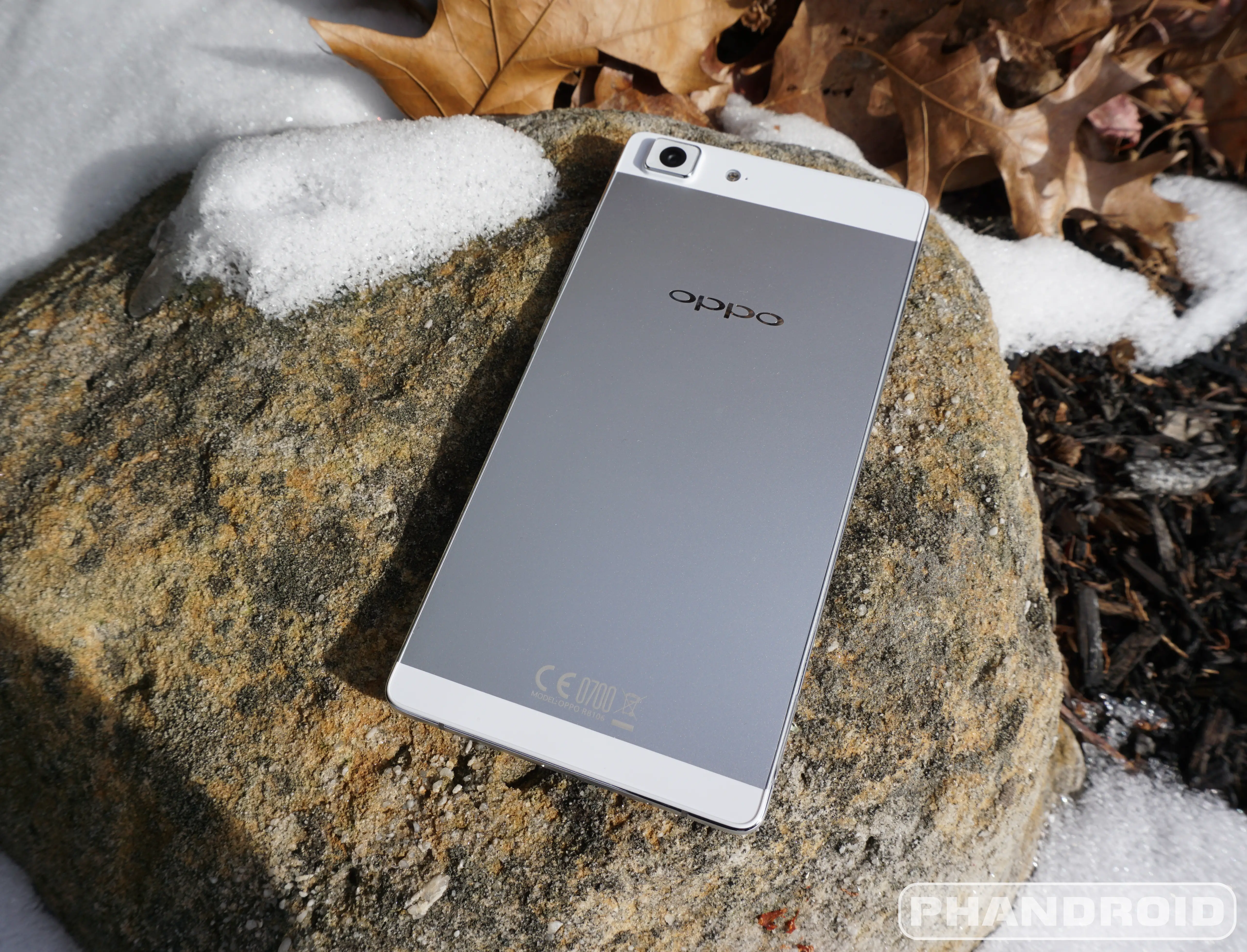
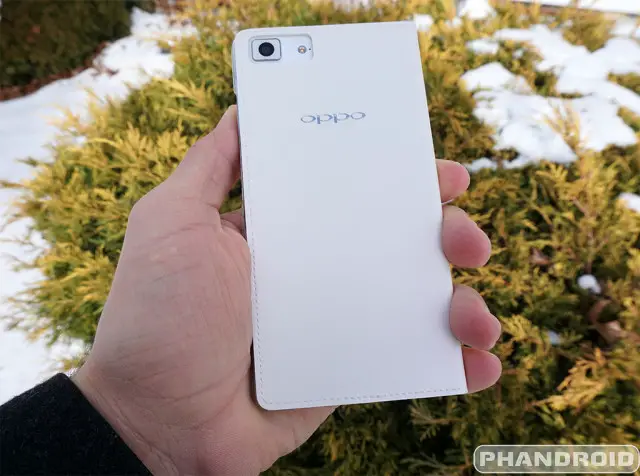
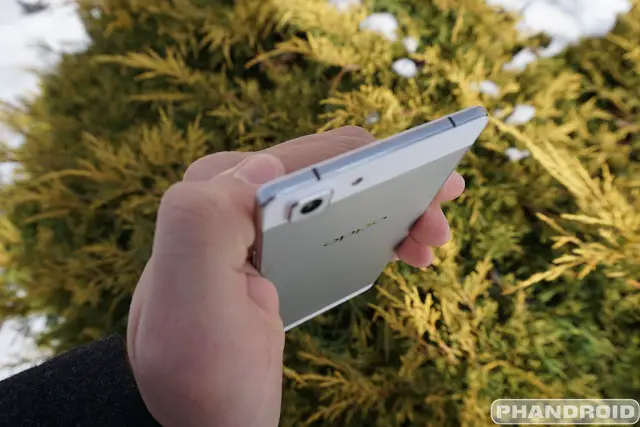
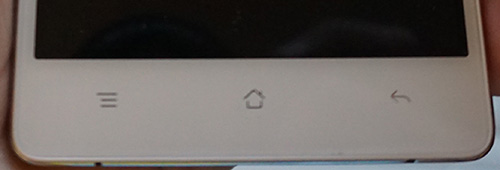
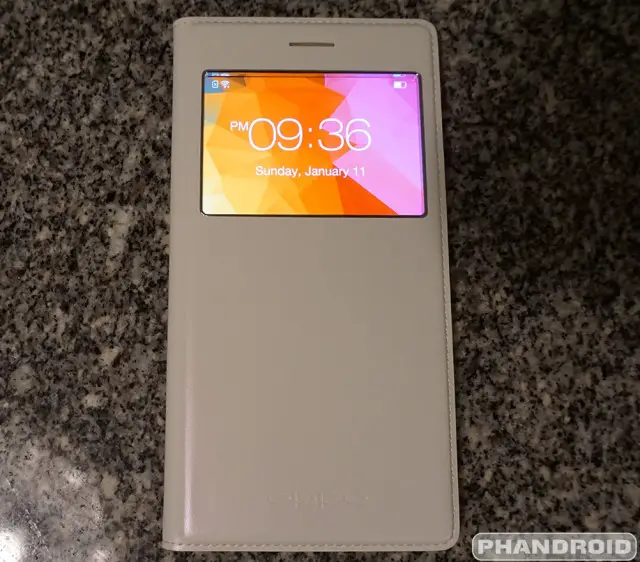
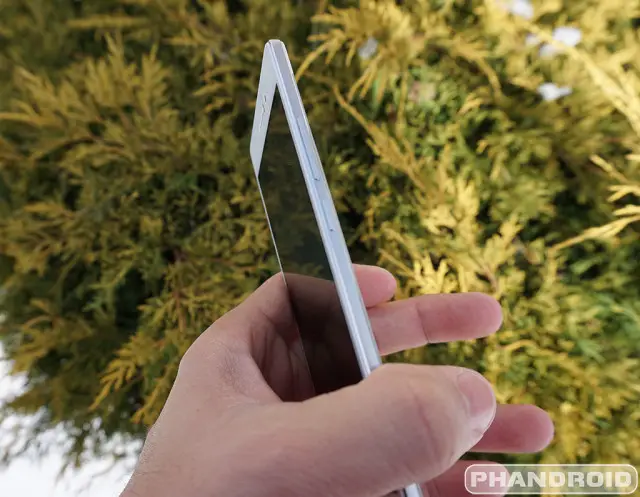
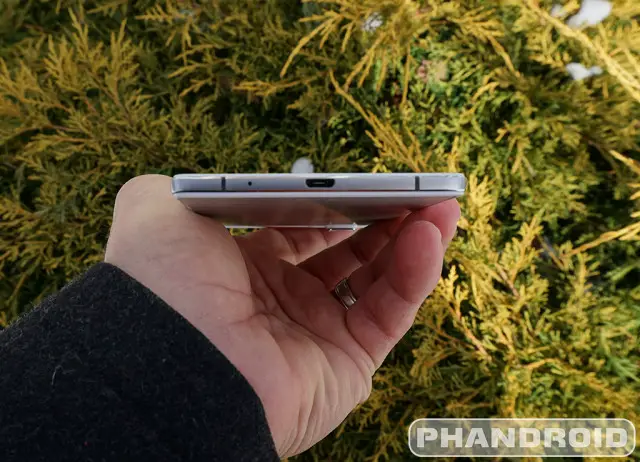





















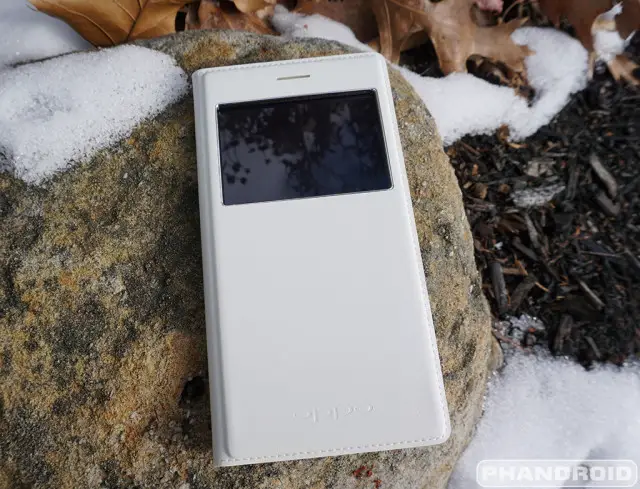
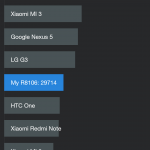
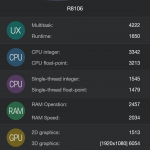
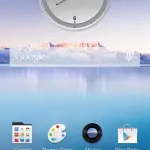
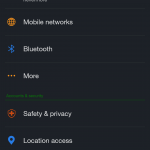
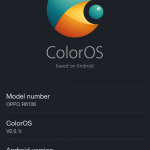
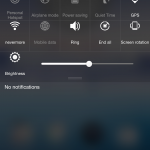

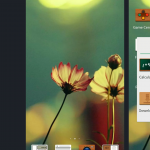

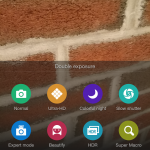

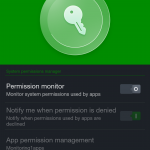
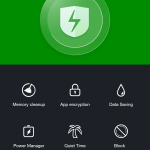

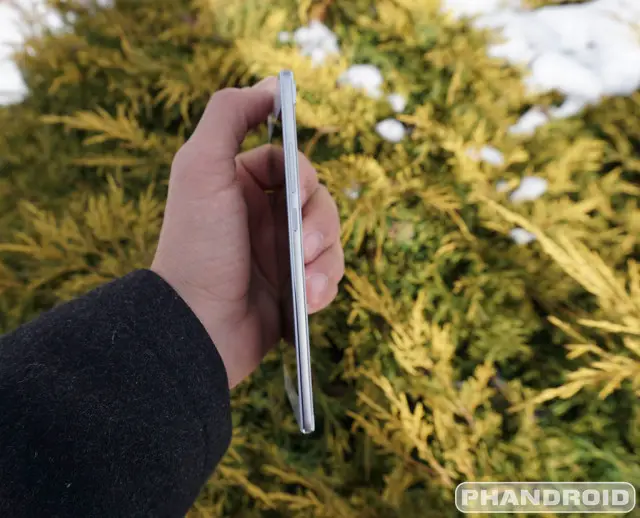




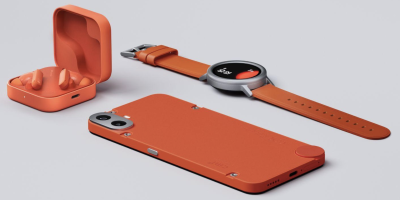
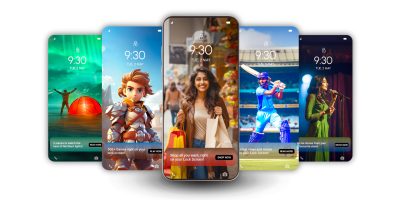




I’d happily pay a bit more for at least 32GB internal but 16GB in 2015? Very difficult to defend that. Cloud storage will NEVER be as reliable and as easily accessible as having your content stored locally on your device.
A lack of expandable storage can be overlooked but not when you’re getting the pittance that is 16GB internal storage. The lack of a removable battery? That’s kinda in the air seeing as how small the battery is.
3.5 mm audio jack adapter? Come on guys, really?
It’s clear your sacrificing quite a bit to be the “World’s Thinnest Phone” but I think they sacrificed way too much to achieve how thin it is. Even if this is meant to be mid-range it’s asking you to overlook too many missing specs that a lot of folks have come accustomed to seeing as standard on most other phones.
A really thin phone is nice but hell’s bells, I enjoy using my headphones without an adapter and expanding my storage at will. Gorgeous device Oppo, just put in all the other great stuff most of us really enjoy.
The rest of the specs on this phone look great.
The missing audio jack isn’t that big of a deal thanks to the included adapter. The battery is a big deal though, I fully agree there.
Sent a meesage to PHANDROID earlier…..
Ya got bit by auto-correct,see Battery Life paragraphs………….. ;-)
Thank you.
what do you keep on your phone to need more than 16gb of storage? Your life’s memories?
In short, yes! Some of us use our phones to… you know… locally store music and movies, take photos and capture video, and download apps. Hey to each their own but 16 GB is hardly anything when you consider the space the OS and default apps already take up.
Even if you don’t store music locally, 16GB isn’t enough anymore. The OS is getting bigger and bigger and apps are getting bigger and bigger.
Seriously? An OS takes nearly 5-7 of that 16gb and that leaves nothing as you don’t get 16gb to even begin with. Just using your camera alone, let alone music and other misc downloads, apps, caches, offline maps, books, vids, eats 16gb easy. IF you can get away with 16gb, you are not a heavy – or even serious – smart phone user in any way IMHO. Further, IMHO, phones should not even be made in 16gb. Just ask iPhone owners who cannot even update to the latest OS because they don’t have enough. And ask the same iPhone people that are class action suing Apple for the fact that 16gb is not even 16gb. 16gb is a joke.
I’ve advocated before for manufacturers to advertise the TRUE storage left over after the OS uses what it needs. 16 GB sounds nicer than 12 and they do like cleaner, more recognized numbers.
I just find it frustrating how folks continue to upgrade these amazing cameras on these phones (4K anyone?) and then expect us to get by with limited on board storage without the ability to expand it. It’s just forcing folks to use cloud products. There’s gotta be some antitrust violation there somewhere or something like it.
Just don’t buy the phone, let the market show them what we want. I won’t buy a phone without at least 32/onboard or a SD slot.
Sounds like someone went to Wharton. Never thought to just not buy the phone.
Brilliant right?
Quite.
You’re either joking or haven’t used a smartphone within the last three years.
“Couldn’t care less” – http://m.youtube.com/watch?v=om7O0MFkmpw
It is so, so stupid to me to sacrifice battery and a freaking headphone jack for extreme thinness. This is the epitome of form over function.
Not sure how my post ended up as a reply.
It is too expensive. The OnePlus One costs only $350 with much better specs, 64GB and has a 3.5mm audio jack! This R5 at $500 must be a bad joke. The video showing the R5 chopping fruits or rolled over by a car is dubious. There is no guarantee that these phones are still in proper working condition. If Oppo doesn’t supply a lifetime warranty to support the claim, then this video is bogus. Reduce the price by half, add a real audio jack and we’ll talk. Otherwise, good lucks for selling it.
So you’re saying I should go out and make my own video to test their claims?
Take those videos with the warning “don’t do it at home” with a grain of salt. If you still want to test, and if Oppo is Ok in case you break the device, just go ahead and see by yourself.
I get it, that the device is sturdy with a steel rim. But I’d prefer the manufacturer to back up their words with a better guarantee rather than an unrealistic video. If you are game, here is what I propose. Send me a working R5, I will break it with 1 single hammer hit. If I fail, I pay you the device. If I succeed, you or Oppo take it back. Ask Oppo if they are OK with that challenge.
When companies like these guys – or Huawei – start coming to the USA companies like Samsung and hTC are going to crap their pants as these guys designs and innovation blow away the big dog who like to talk a big game and come out with incremental baby step improvements. For example, the SGS4 to SGS5 – ha, what a joke that was. This particular phone is not spec heavy per se, but it just the innovation of form that is nice to see.
Not necessarily Huawei and Oppo (trough oppostyle) are available where I live but you don’t see them that often. A lot of people over here associated Huawei with cheap quality although that opinion is slowly fading away and the majority of the people have probably never heard of Oppo
You don’t see them because they’re not available at the carrier. If that ever happens, other OEMs are going to need to step up their game in certain areas. Oppo and Huawei both make elegant tanks for your hand.
Huawei phones are available at carriers on contract or prepaid but Oppo isn’t
Lol – thank you. Fwiw, not all of us assume that everyone is from the USA. :D
Unfortunately some do think that everyone on this site is from the US.
Doing away with a standard headphone jack just so it can be thinner is innovation?
Eww, an adapter for the 3.5mm jack? Never.
Can’t charge or use USB OTG (presuming it has it) simultaneously. Awful decision.
You can use USB and even USB OTG if you need to. You just can’t charge and listen to your headphones at the same time.
what about a something like this: http://www.amazon.com/Micro-Cable-Power-Galaxy-Samsung/dp/B00CXAC1ZW would that work i wonder? that way you could charge and still have a open usb port.
Bluetooth headphones bro its 2015, $30-$50 for a decent pair won’t kill ya
I prefer earphones and don’t want deal with another electronic that needs to be charged.
USB OMG? lol
Lol, damn autocorrect. I didn’t even notice.
I frankly don’t trust any electronic device, or software, from a Chinese company.
Technically most phones are assembled by foxconn so almost all electronics are Chinese.
Oppo needs a new logo.